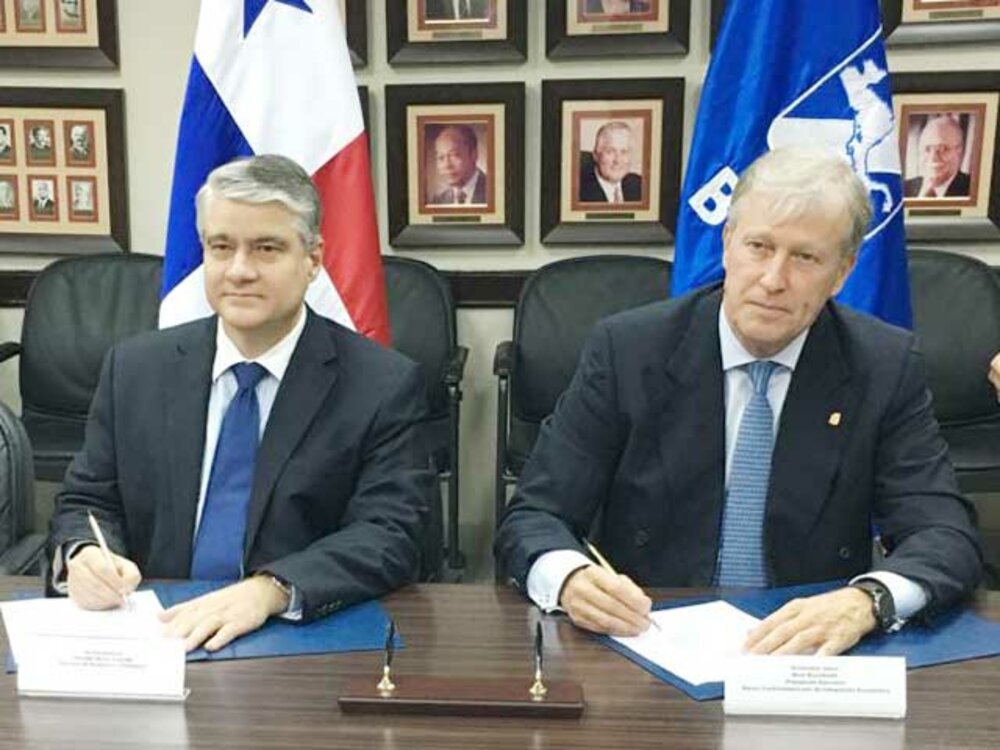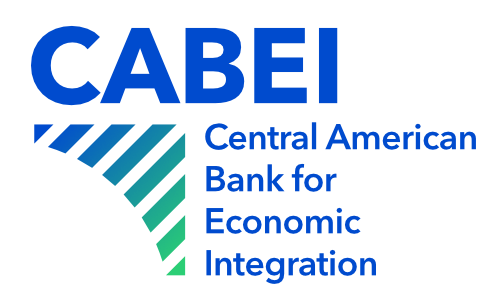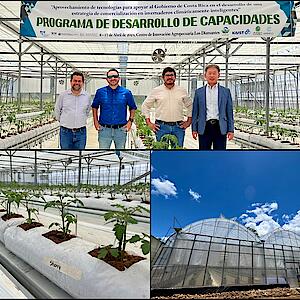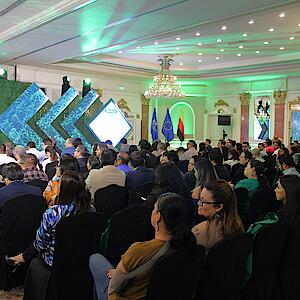CABEI credit of US$100 million to improve sanitation in Panama

The resources are aimed at supporting the expansion of sanitation and public service infrastructure projects in order to improve the quality of life of Panamanians.
Panama, June 7, 2017. – Today, the Central American Bank for Economic Integration (CABEI) signed a US$100 million loan agreement with Panama’s Ministry of Economy and Finance (MEF) to finance the Sanitation Program for the Arraiján and La Chorrera Districts.
The agreement was signed by CABEI Executive President, Dr. Nick Rischbieth, and Panamanian Minister of Economy and Finance, Dulcidio De La Guardia, on behalf of the Government of Panama.
In this regard, CABEI Executive President, Dr. Nick Rischbieth, stressed that the development of basic service infrastructure in the region is fundamental for promoting equity, improving the quality of life of the inhabitants and boosting competitiveness in the region in order to achieve sustainable growth.
He also commented that the financing provided confirms CABEI’s commitment to support its member countries in order to contribute to the achievement of efforts made towards the fight against poverty, sustainable development and social inclusion.
Panama's Minister of Economy and Finance, Dulcidio De La Guardia, stated that the loan agreement is essential for the sanitation program in the districts of western Panama; the program is being executed by the government administration of President Juan Carlos Varela.
Minister De La Guardia added that, "The recovery of healthcare and environmental conditions in this important area of the country will lead to improved healthcare services and quality of life for the population.”
Program
The Sanitation Program for the Arraiján and La Chorrera Districts involves financing the detailed design and construction of the Sanitary Sewage Systems of the Arraiján and La Chorrera Districts, which are located in the Panama West province; these will allow the collection, conduction and final treatment of wastewater generated in the area, leading to a reduction of pollution levels in rivers, streams and the Bay of Panama, and, thus, improving public health and the quality of life of inhabitants.
The Program is in the framework of the CABEI 2015-2019 Institutional Strategy and prioritized in Panama’s 2015-2019 Government Strategic Plan. It also positively impacts the Strategic Axis of Social Development and the Focus Area of Human Development and Social Infrastructure.
The project will support the achievement of the Sustainable Development Goals (SDGs), including: ensuring a healthy life and promoting wellbeing for all; water availability and sustainable management; build resilient infrastructure; promote inclusive and sustainable industrialization; make cities and human settlements safe and sustainable; and conserve oceans, seas and marine resources ensuring their sustainable development.
With this financing, CABEI plans to support Panama with the following development impacts:
Improvement of Health and Quality of Life: through an improvement in the quality of surface water and groundwater and a reduction of the risk of contamination by pathogens and health vectors.
Effect in the Target Zone Economy: improving the management and treatment of effluents will improve the conditions of the lands and bodies of water, which will contribute to attracting more investment in urban, commercial, industrial, recreational or tourist developments that will result in better economic conditions and generation of new employment sources.
Employment Generation: It is estimated that the program will create 700 direct jobs during its execution phase. During its operational phase, it is estimated that 60 people will be employed in the operation and maintenance of the sanitation system.
CABEI was created in 1960 as the financial arm for the region's integration. It headquarters are located in Tegucigalpa, Honduras. In the coming months, the Bank plans to open an office in Panama to attend the projects it implements in the country.





![[Translate to English:] [Translate to English:]](/fileadmin/_processed_/e/3/csm_WhatsApp_Image_2024-04-18_at_2.12.23_PM__2__590ef43ade.jpeg)
